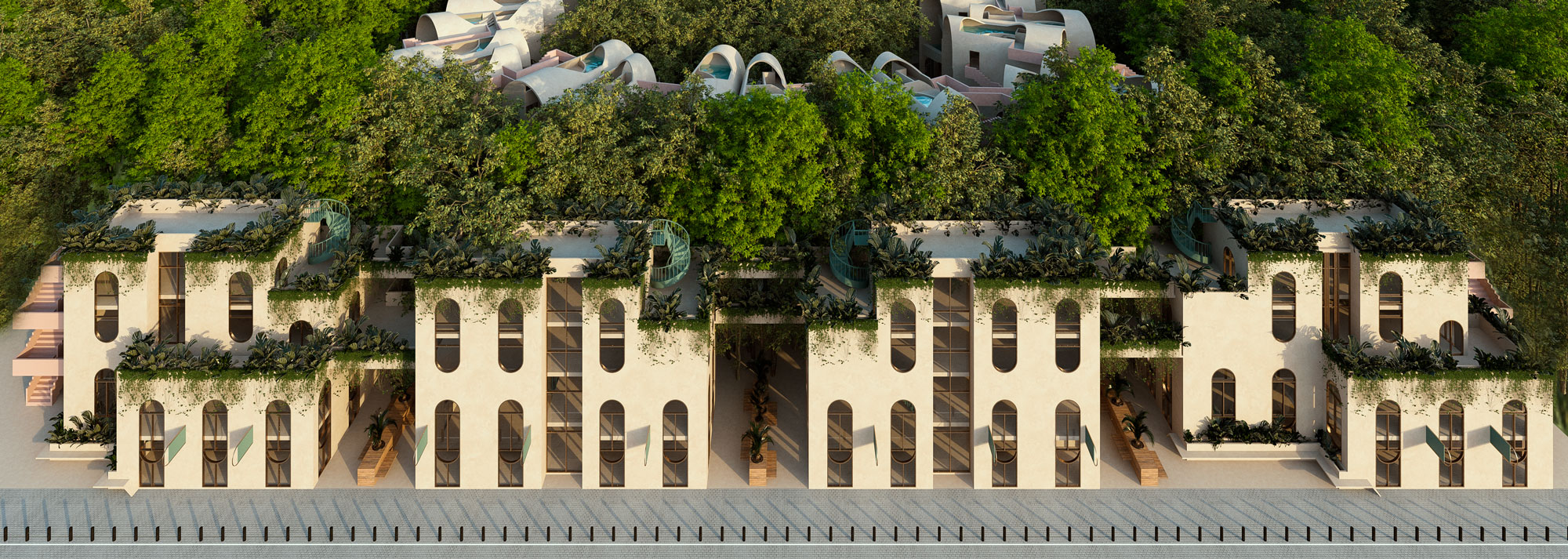

ABOUT THE AUTHOR
Rita Laura Bustos González Architect, Technical Executive Project Leader and Responsible for Sustainability at Cafeína Design
“I am convinced that through architecture we can generate a positive impact on the user, the community and the planet, in the face of the complex problems that we encounter today, it is necessary to create comprehensive proposals, it is true that the way in which the human being has made architecture throughout history is part of the problem, but exercising it intelligently and sustainably can be part of the solution; For me, architecture is a tool of great power that can change our reality and the environment. For a greener planet, better cities and good architecture.”
Why should I be interested in sustainability when contacting an architecture firm?
Many of us know the threats that put humanity at risk, one of the most important is global warming and climate change, but how does that happen? What is known as the “greenhouse effect” is a natural phenomenon produced by the gases found in the atmosphere that help to retain the heat that touches the earth’s surface, keeping the planet in balance. The temperature inside the atmosphere is very different from that of space, which is why thanks to this temperature balance there is life on earth.
After industrialization, the accelerated population growth and the use of non-renewable energies (fossil fuels) which emit a high quantity of CO2, that starts to alter the balance of the planet, triggering multiple effects such as the melting of the poles, natural disasters, droughts, floods, fires, seasonal variations, extreme temperatures, etc. This phenomenon is known as climate change if global warming continues to increase, irreversible consequences can be unleashed that will threaten our lives.
Now, what does this have to do with me? Well, first it is related to the way we live, move, produce, consume and dispose, unfortunately, it is not sustainable, contributing to the negative environmental consequences mentioned above.
So what is sustainability?
In the “Brundtland Report” also known as “Our Common Future”, the concept of sustainability is described as “development that meets the needs of the present without compromising the ability of future generations to meet their own needs.”
In our previous publication it was mentioned that the construction sector is responsible for the consumption of high percentages of natural resources, the energy consumed, and the waste generated. We are facing a health, economic, climatic crisis, and complex problems that We never even imagined before. Living and developing in a sustainable way is not a fashion, it is a necessity.
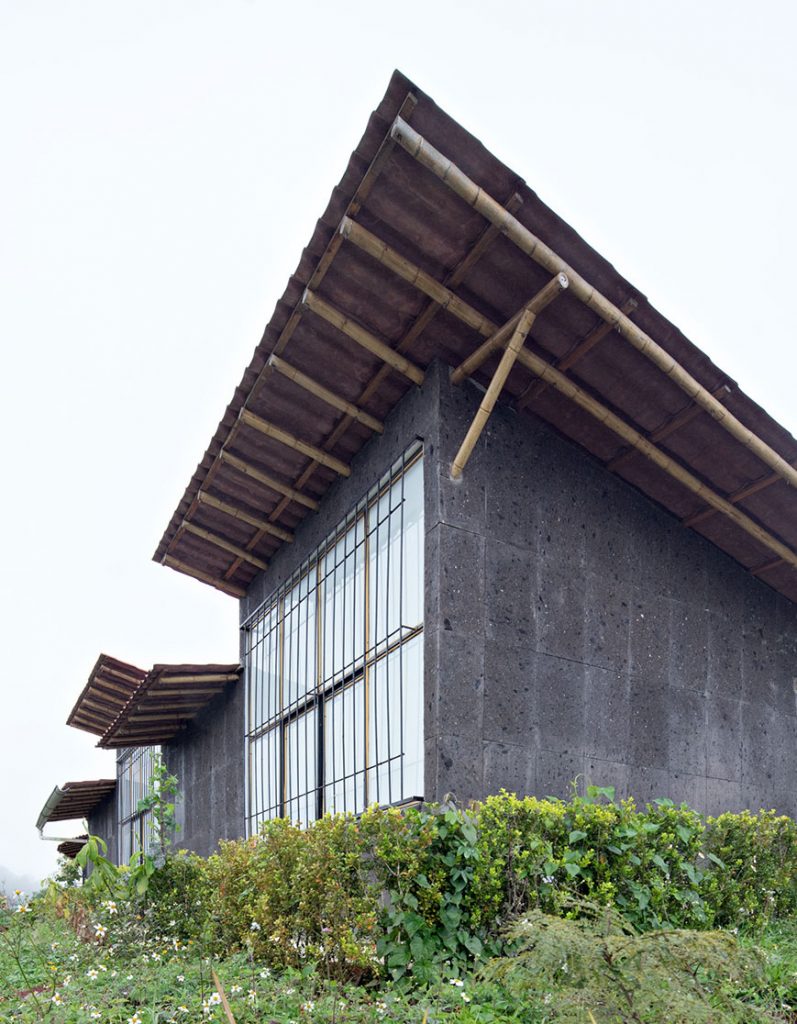
How do we achieve Sustainability at Cafeína Design?
For us, each project is unique, so we consider it important and necessary to generate sustainable architecture that provides comprehensive solutions to complex problems, mitigating the negative impacts of climate change.
Therefore we developed the “MSCD” (Cafeina Design Sustainability Model) a comprehensive approach that serves as guidance in each project. The model integrates the minimum necessary actions to take into account to develop sustainable projects, implementing each action from an environmental, social, and economic perspective.
The “MSCD” was created taking into account the rating categories used by the different certification systems that have been worldwide references for sustainable buildings such as LEED, BREEAM, Green, DGNB, among others, and the 3 essential pillars of sustainable development. exposed in the “Brundtland Report”.

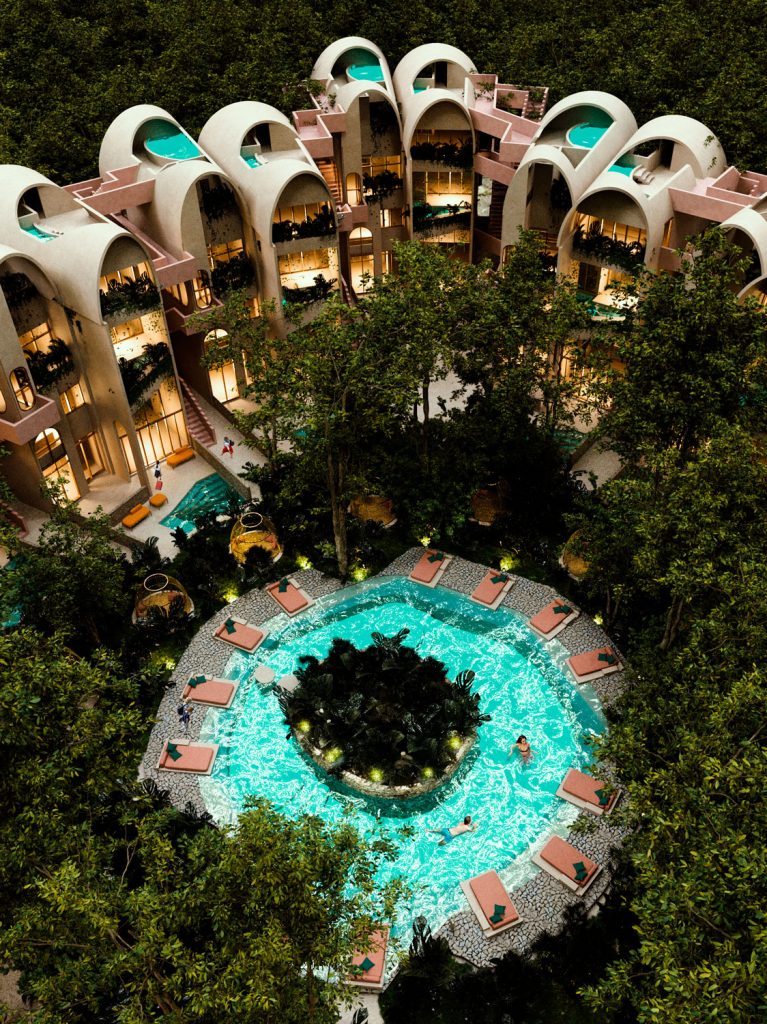
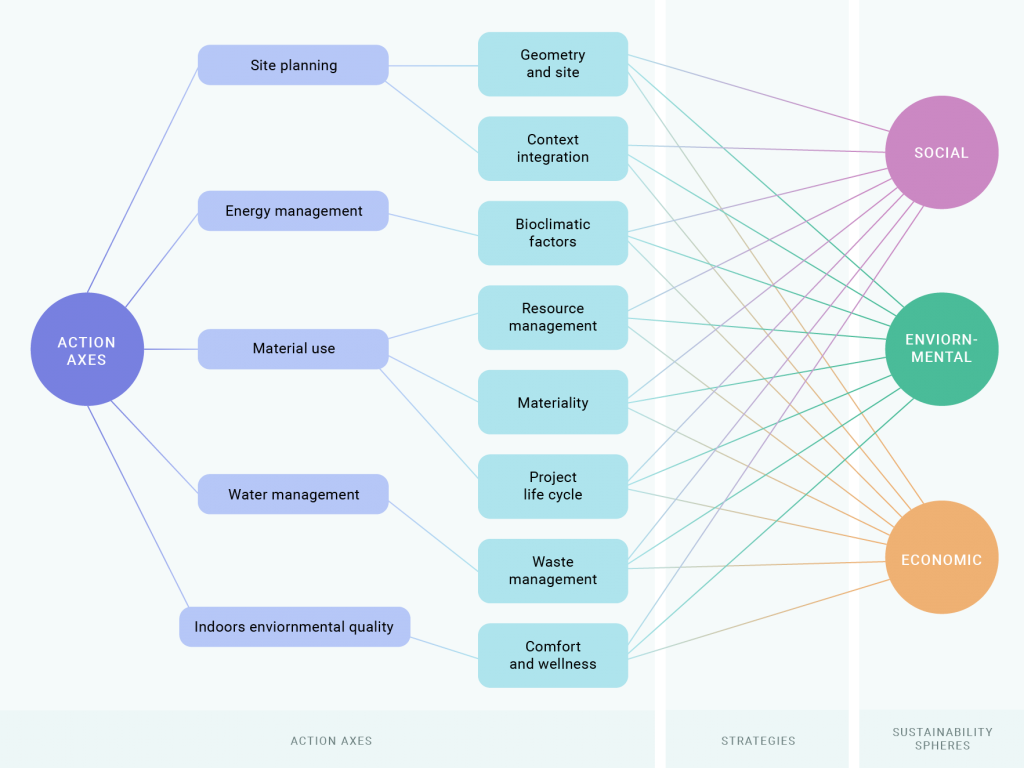
Cafeina Design Sustainability Model
Our sustainability model is classified as follows:
• Lines of action
• Strategies
• Sustainability spheres
When we start a project, the sustainable lines of action with the highest priority are defined, depending on the nature, budget and objectives of each project and client, always taking into account the site where it is located and even its life cycle. For example, the lines of action do not have the same order of priority in a project in the commercial or education sector, where the connection with the environment and social integration may be more relevant, than in a housing project. I clarify, for us, all lines of action are important!
MSCD Application example
A good example is one of our projects Eden Tulum, located in the southeast of Mexico in a particularly hot weather area, where energy consumption is excessive due to the AC cooling approach followed by most developers, and therefore CO2 emissions, the line of action "energy management" is a priority.
Some strategies that we applied to this project was to replace the consumption of electrical energy with renewable energies, place double-glazed windows and certain construction materials to avoid thermal losses, making the air conditioning system more efficient, generating significant energy savings, vegetation was proposed in strategic areas for generating indoor and outdoor environmental quality, additionally, the architectural program and the distribution of the buildings encourages the formation of community and social interaction, providing identity and promoting relaxation.
In each strategy applied, we seek to contribute to the 3 spheres of sustainability, in the social sphere we seek cohesion between cultures and communities to reach satisfactory levels of quality of life, health, and education, in the environmental sphere, understanding that nature and environment are not an inexhaustible source of resources, seeking their protection and rational use. Lastly in the economic sphere, we aim to generate equitable wealth for all without damaging the environment.
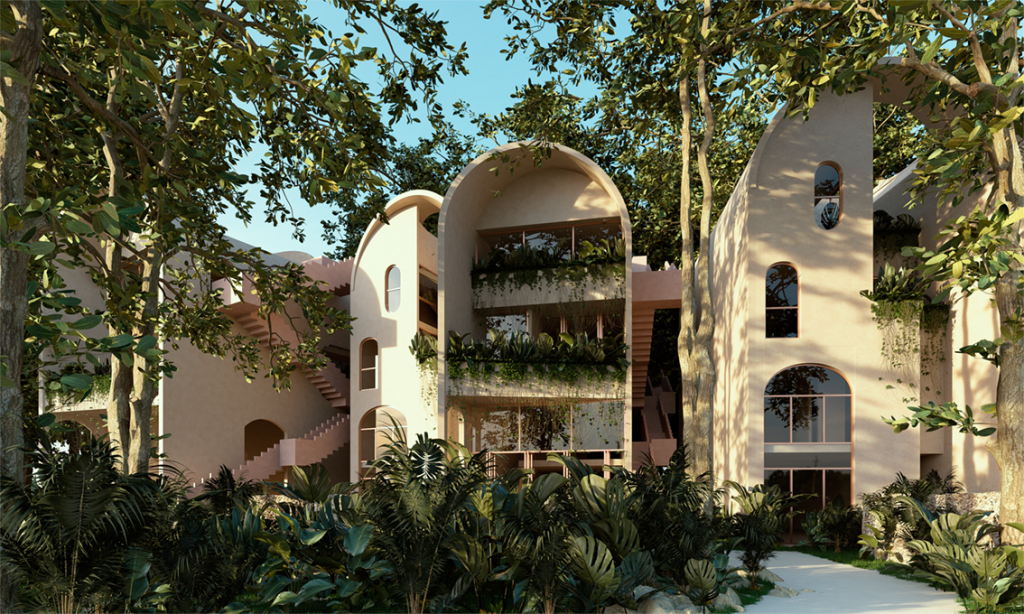

Conclusions
Making sustainable architecture requires constant effort, awareness, and understanding that it is for a common good.
Our commitments, acquired by responsibility, have become the strategic purpose of Cafeína Design, we are professionals who want to make better architecture, resilient infrastructures, and the development of better cities that aspire to economic growth, social progress, and a balance with the environment, with the objective of not only trying to mitigate the negative impacts of climate change but also generating a positive value for the lives of current and future generations.
Interested in this topic?
Contact us
